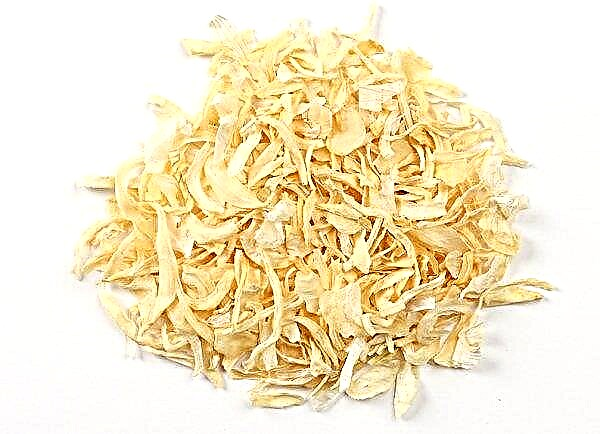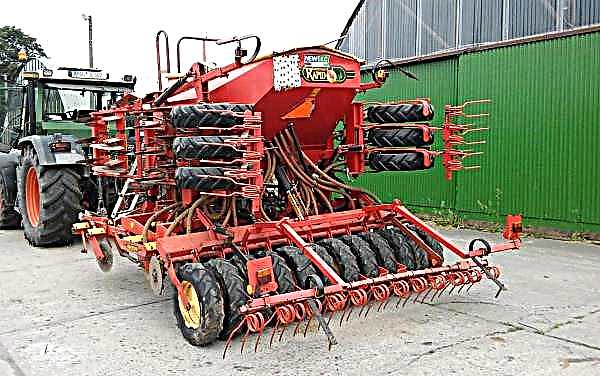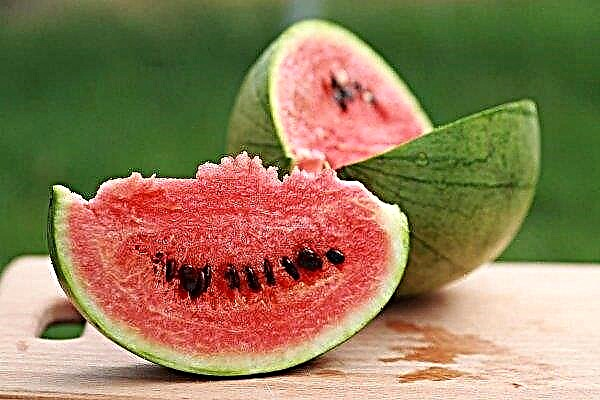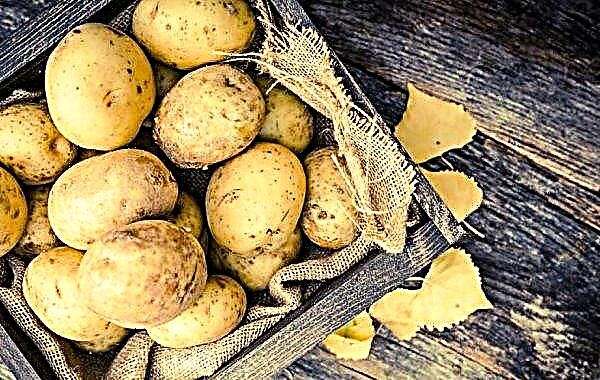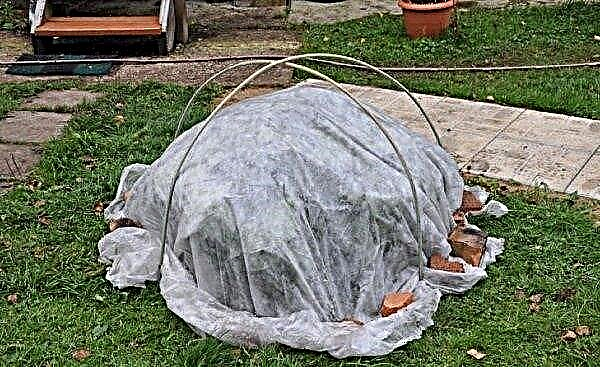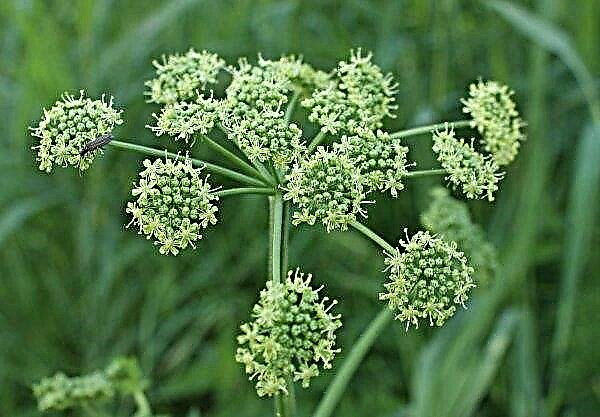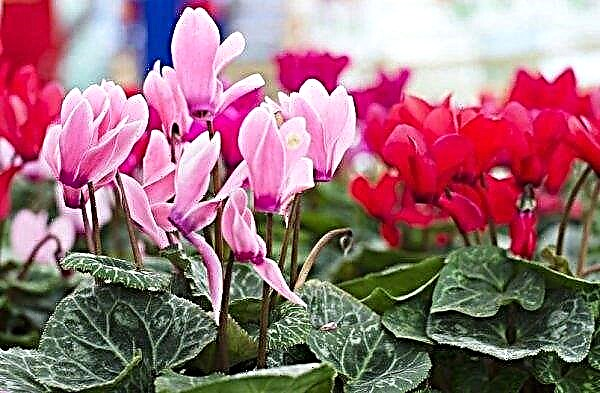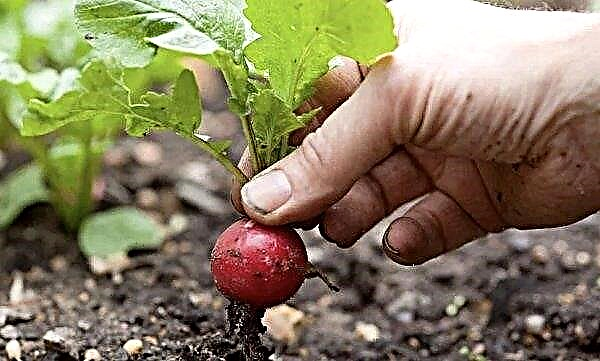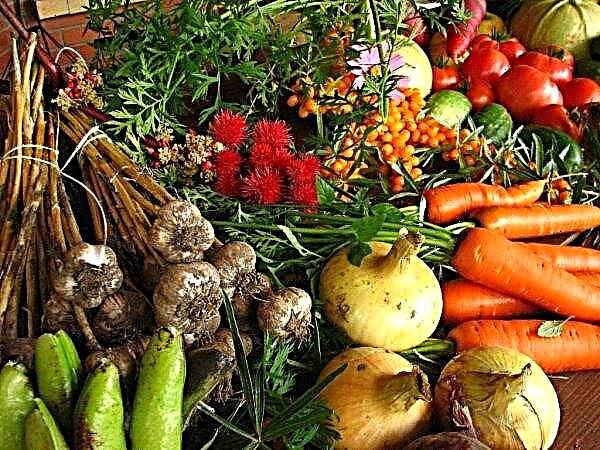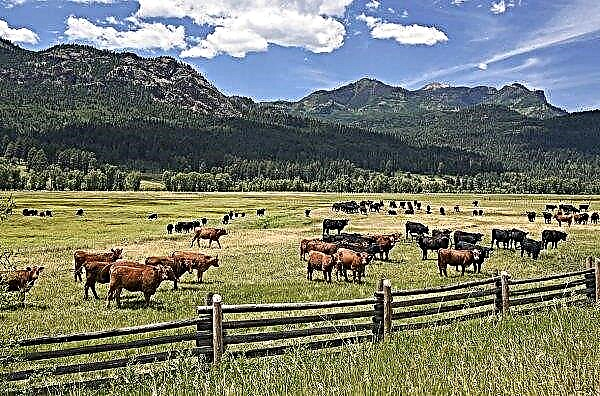Celery leaf is a great addition to salads, first and second courses, so it is not surprising that many summer residents grow this vegetable in their plots. However, in order to collect a good harvest of greens, it is worth considering the features of sowing and further care for the crop, which will be discussed later.
Description and characteristics of leaf celery
Leaf celery is the most unpretentious version of this culture, since it adapts better to the root and petiole to various environmental conditions. Among the main characteristic features of this plant are small bright green leaves and a well-perceptible spicy aroma, due to which it is often used to create spices and seasonings.
At the end of the growing season (lasting an average of 150 days), rounded root crops weighing about 200 g with a smooth surface ripen. The pulp of the plant perfectly retains its white color, and even after heat treatment. Many varieties of leaf celery are characterized by increased resistance to shooting and have powerful leaves.
All parts of the vegetable are rich in calcium, potassium, iron, phosphorus, magnesium and other mineral elements. They also contain a considerable supply of amino acids, vitamins A, E, C and group B, which help fight various ailments and make the plant an excellent prophylactic. First of all, it will be useful for people with problems of the cardiovascular system and gastrointestinal tract, nervous system disorders, obesity and diabetes.
Did you know? Celery - a vegetable with the so-called «negative calorie content» - the body spends more energy on its absorption than it can get as a result of its use.
Growing Features
The process of growing leaf celery is not much different from cultivating other species, although many gardeners claim that this vegetable is the easiest to grow. Be that as it may, it is important to consider a number of important nuances to get a good harvest.
Sowing time
Leaf celery does not tolerate cold, so when it is sown in open soil, you need to wait until it warms up well. In different regions, this process takes place at different speeds, but on average, the seeds of a crop are planted in the soil not earlier than mid-April or early May.
Unfortunately, this plant is characterized by slow growth, and it is almost impossible to get friendly seedlings, so most often the vegetable is grown from seedlings. At home, seeds have been sown since the beginning of March, and in May, grown seedlings are transferred to the selected bed.
Suitable soil
The best option for germinating leaf celery seeds is a substrate consisting of equal parts of sod land and humus, with a small addition of sand. Before sowing, it must be further decontaminated with a weak solution of potassium permanganate and loosened for the best possible air permeability.
Celery does not like acidic soils, therefore, in such areas, lime is additionally added to the ground, slightly mixing it with the soil (about 0.3-0.5 kg of substance will be needed per 1 m²). When sowing seeds in boxes, the soil mixture of leaf soil, humus, sand and lowland peat, taken in a ratio of 1: 1: 0.5: 0.5, is perfect for the role of substrate.
Seed preparation
Preparing celery seeds for sowing involves performing almost all of the same actions as when growing other crops. First you need to select healthy specimens (given the small size of the seeds, it is enough to examine them for mold), then disinfect them in a weak solution of potassium permanganate, soak them in a growth stimulator for several hours, and at the end of the procedure, keep them in room temperature water for 24 hours.
To moisten the seeds, it is not necessary to completely dip them in water - you can simply wrap them in a damp cloth and maintain it in this state for 24 hours.Important! Try not to overexpose the seeds in a humid environment. As soon as they begin to swell, you can immediately remove them from the fabric so that excessive moisture does not cause decay.
Before sowing, it is useful to dry and mix celery seeds with sand (1:10), which will greatly simplify the planting process. The fact is that the small seeds of the plant are almost invisible on dark soil, so the sand in this case will act as a beacon and help to correctly distribute the seed in the garden.
Video: Sowing leaf celery for seedlings
Sowing seeds
When sowing celery seedlings in boxes, you should try to follow the sowing scheme of 2 × 2 cm (the distance between adjacent plants in the row and the rows themselves). However, if the plantings turn out to be thicker - it’s not scary, because after germination they can be thinned out, removing the weakest plants.
It is impossible to deepen the planting material into the soil, just spread it out on the surface of the substrate and lightly press it with your fingers. From above, you can cover the seeds with a small amount of loose substrate and organize a film (or glass) shelter to create a greenhouse effect for plants. Inside the shelter, the air temperature should be maintained at + 19 ... + 24 ° C, then celery seedlings will appear in 10-12 days. As soon as this happens, the temperature values should be lowered to + 15 ... + 16 ° C.
Seedling Care
After the first seedlings appear, the greenhouse effect inside the film shelter must be maintained for the next 2 weeks, until 2-3 true leaflets appear on the seedlings. Having removed the film, the grown specimens can be peaked in separate containers or transplanted into other boxes, keeping the distance between young cultures within 5 cm. Under such conditions, the seedlings will receive an additional “safety margin” and, when planted at a constant place of growth, will quickly turn into strong plants with juicy leaves.
At the time of home cultivation, it is worthwhile to provide the plants with sufficient lighting throughout the day (preferably diffused), constantly maintain an acceptable temperature (within + 16 ... + 18 ° C) and water the crop in a timely manner.
Watering in the process of growing seedlings should be moderate, mainly using a spray gun. Moisture regularity - 1 time in 2 days or as the top layer of the substrate dries.
Seedlings are fertilized 2 weeks before the intended transplantation into open soil using mineral fertilizers: 10–15 g of ammonium nitrate and 5–10 g of superphosphate should be dissolved in 5 l of water.
Important! When applying fertilizers, try not to get them on the delicate leaves and stems of young celery, as this is fraught with serious burns and even the cessation of its growth.
Planting seedlings in the ground
Leafy varieties of celery, in which leaves and petioles are used for food, should be planted according to the scheme of 20 × 30 cm, which will be quite enough for the full growth and development of the culture. The planting of the grown seedlings is started in May, when the weather is stable and the root system of the plants does not suffer from possible return frosts.
The transplant process itself is simple and consists of standard actions:
- Prepare the soil (humus, compost or sawdust are added to heavy soils from the fall, and enriched with lime too acidic).
- Make holes in the designated places and moisten the soil inside them.
- Carefully remove the seedlings from seedlings and plant them on the bed.
- Seal the holes and water the plantings.
The best time to plant a vegetable is in the evening hours or just a cloudy daywhen young plants will not be exposed to direct sunlight. Their effect immediately after transplantation may adversely affect the adaptation process, which is why young celery leaves begin to fade.
Important! Unwanted precursors for celery will be parsley, carrots, parsnips and dill, so you should not plant a crop after them.
Outdoor Celery Care
Care for leaf celery in open soil begins immediately after transplanting seedlings. In the first few days, the culture will have enough moisture already in the ground, but as the top layer of soil dries, the watering procedure should be repeated, later on focusing on this indicator.
As for water, it should be heated in the sun, not have impurities of chlorine or heavy metals, and the best time to use it will be evening or morning hours, when there is still time before the appearance of the scorching sun.
The first top dressing of celery is carried out 2 weeks after transplanting seedlings on the bed, and prepared nitrogen-potassium fertilizers or chicken manure solution combined with water in a ratio of 1:10 are usually used as a nutrient substrate. Re-fertilizing the plants is carried out after a month, and this time you can use mineral mixtures containing nitrogen, potassium and phosphorus. After using fertilizers, it is advisable to wipe the leaves of the culture with a damp cloth, and loosen the soil under the plants well.
A biennial plant is often grown as an annual, and from the planting of seeds to full autumn harvesting, several cuts of leaves are performed. However, if you want to get your own seeds, then you have to take care of the winter shelter for the crop.
In the southern territories, the usual spandex is sufficient for this, and in the central and northern regions it is better to dig out celery and, together with an earthen lump, transfer it to the cellar, having previously cut the shoots (wintering of the culture should take place in a dark and cool place). In spring, the surviving specimens are returned to the garden and wait for flower stalks, which after flowering will form the desired seeds.Did you know? Celery was known as a medicinal plant for many centuries BC. And the first registered use of this vegetable as a food product was in 1623 in France. After 150 years on the territory of Russia, Catherine II was actively engaged in its popularization, which not only herself used celery, but also recommended it to her subjects.
There are no other nuances in the care of leaf celery - however, this is true only for those cases when pests and diseases do not appear on it.

Pest and Disease Control
Subject to all the requirements of agricultural techniques for growing leaf celery, he is not afraid of diseases and pests.
True, in some cases, the gardener may still encounter the following problems:
- White rot - An ailment of fungal origin, which is accompanied by the formation on the surface of root crops of a white mycelium with black sclerotia of the fungus. Celery tissue softens and turns brown, after which the underground part rots completely. In the fight against the disease Bordeaux mixture, copper sulphate, preparations "Oksikhom", "Khom" (in the dosages indicated on the package) are used.
- Celery scab - characterized by the appearance of brown spots on the rhizome of the plant, which eventually crack and shed dead tissue. The disease develops especially actively in the cold season, and in order to prevent its spread, you can use the preparations “Skor”, “Chorus”, “Rayek”, Bordeaux mixture.

- Downy mildew - it affects the leaves of the culture: first chlorotic spots appear on them, after which they turn into light yellow, slightly angular marks of large sizes. Over time, they turn brown more and more, and a gray-violet coating appears on the back of the sheet. When the first symptoms of the disease appear, it is necessary to treat the seedlings with copper chloride or Bordeaux mixture, and after a week, additionally feed the culture with ammonium nitrate. In subsequent years, celery should not be planted in the same area.
- Rust - A disease caused by the activity of a rust fungus, which on celery manifests itself in the form of red-brown pads located on the inside of the leaves, as well as the stem and petiole. A little later, the plant becomes covered with light brown spots, collected in small compounds, with dusty spores inside. In the future, pathogens only continue to develop and, falling into the soil, can be stored in it until next year. Effective drugs in the fight against this ailment are considered compounds "Azofos", "Vectra", "Abiga-Peak", "Topaz".

- Cercosporosis of leaves - an ailment characterized by the appearance of roundish or angular spots of a yellowish or dirty brown color, which eventually fade in the central part and get a dark brown rim around the edges. They can be found on any part of celery, but such marks become especially noticeable in wet weather, when a grayish coating appears on the spots. Affected specimens always lag behind in growth, their leaves turn yellow and die over time.

- Carrot leaf - a pest that actively sucks juices from a plant, thereby provoking curl of leaves and a decrease in celery yield. High activity of leaf-flies occurs in June or July, and the period of oviposition of the pest is extended over time. To eliminate the problem, it is worth using the preparations Fitoverm, Iskra, Iskra Bio.

- Carrot fly - pest larvae are especially harmful, which, getting into the ground, quickly get to the root crop and destroy it from the inside. After such exposure, the aerial part of the plant also dies, due to which the vegetable yield is significantly reduced. In the fight against insects, insecticides “Decis”, “Aktara”, “Obverse” are often used, and birch tar will be appropriate from folk remedies.

Any of these problems is easier to prevent than to try to solve, so always observe crop rotation, do not over-moisten the substrate and do not plant parsley, carrots or other plants near celery that suffer from the same diseases and pests.
Important! Chemical treatment of celery should be done no later than 3 weeks before the expected harvest.
Harvest Dates
You can completely remove leaf celery already in late September or early October, without waiting for the first frosts to come. The pitchfork will be the most convenient tool for extracting a plant from the ground, and as soon as it is in your hands, you can cut the tops (at a distance of 2–4 cm from the base) and transfer the tubers to a cool place. Of course, they are not used as often as food as underground parts of other species, but they can still be useful.
The remaining green celery quickly withers and loses its benefit, so to store it, you need to rinse the leaves well, dry them and, wrapped in aluminum foil, put in the refrigerator. In this form, they will be able to maintain their freshness for 10 days, which will be enough for transportation.
If there is no refrigerator, then you have to cut the root of the culture, and lower the stem into a container with cool water, where it will stand for up to a week. A longer storage of the plant in fresh form is possible only after its transplantation into a pot.
Celery is a real storehouse of nutrients and an excellent tool for weight loss, and given the relative ease of its cultivation, it is not surprising that the culture is found in a large number of household plots. With a little effort to plant and care for leaf celery, you get a good source of vitamins for the whole family.







